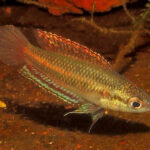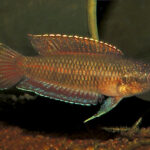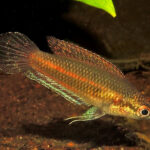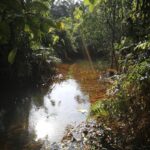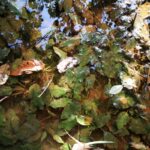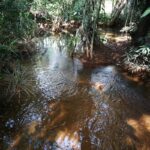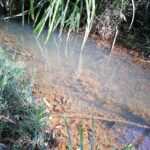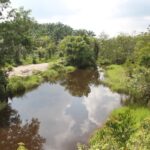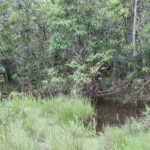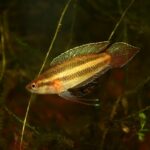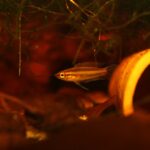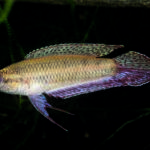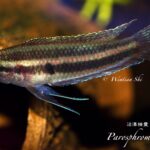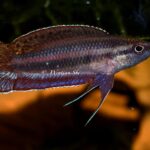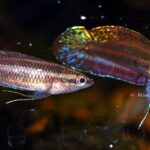
Tweedie 1952
First description: M.W.F. Tweedei 1952: Notes on Malayan fresh-water fishes.3. The ananbantoid fishes.4. Some new and interesting records. 5. Malay names. Bulletin of the Raffles Museum, 24:63-95.
Characteristics: unusual species of the Parosphromenus genus, but the differences still do not justify a split. It has basically a safe species status because of the particular structural characteristics. At least one well-known local form (“Wakaf Tapei”) exists, which is probably a subspecies, or at least a sub-species; eventually may even be considered a separate species (see below).
The fish appear to be more elongated than most other Parosphromenus, which is also confirmed in the fin structure: dorsal XVII – XIX, 5-7, total 22 – 25, anal XIII-XVI, 6-9, total 21-23. This differentiates it from all other known licorice gouramis, even from those with a long dorsal fin (especially P.quindecim, but also P.deissneri and P.filamentosus). Furthermore, the almost complete absence of fluorescent colors in the unpaired fins is a unique characteristic. Only in some forms does the anal fin show fluorescent patterns, but never light bands, as in many other species. Because of the different body and fin structure, females are easily distinguished from the females of other licorice gouramis, a unique feature in this group. In some populations all or many animals display a blackish lateral body spot that has been mentioned in the original description, too. But often the spot is missing. The courtship colour of the female is not so extremely pale beige-yellow in most of the local forms, as it is the case for many other species. The form of Wakaf Tapei shows the unique feature that the female in courtship is rather dark, some will even become blackish. This could be at least be a sub-species indicator, perhaps even (as J. Vierke says) an indicator for an own species status. I suspect that this might be an ongoing species forming process.
Similar species: because of the different colouration, the more streamlined body shape and the unique fin structure, compared to all other licorice gourami species, the risk of confusion is low, practically the lowest of the whole genus. Within the structural bandwidth of characteristics, this species is very variable, especially the males. Most of the fish show pastel colours in varying degrees, but also fish occur , with beige-brown, bluish-pink, or brown-red or almost entirely red colour. Furthermore fish of most populations are elongated and thin, while others appear compact with higher backs. The ventral fins of all males have very long filaments. The caudal fins of some males are also oval or triangular elongated with several filaments, while others are more rounded with just one middle filament ray (e.g. Wakaf Tapei).
Occurrence / Distribution: very large extended distribution in the north-east of the Malaysian peninsula (province Terengganu), occuring even in southern Thailand as the only licorice gourami species. Within this distribution area today many more or less isolated differently coloured sub populations occur, some of them have already been imported privately or commercially (e.g. from Terengganu, Merchang, Kota Bharu, Wakaf Tapei, “southern Thailand”, and others). They should not be mixed. The almost total absence of light colours in this unusual species shows that its centre of distribution is not situated in black water. Like other Parosphromenus some of their local variants inhabit black water habitats as well, but opposite to almost all other Parosphromenus forms, they live in clear water, too (but mainly in transitional areas). They prefer lighter biotopes, compared to other species of the genus: their adaptability to man-made water bodies (roadside channels, reservoirs, pond-like structures) is much higher. For a collection by D. Armitage Dennis Young mentioned they mainly came from Paper Bark (melaleuca) swamps.
Threat: lower, compared to other licorice gouramis, due to their different habitat requirements, but still significant, because of the general ongoing destruction of natural waters. For some colour variants or local forms the threat is high, because of the limited range of distribution. Large areas of the original biotopes are no longer habitable for the species with further decreasing trend for available habitats. D. Young states that the original Wakaf Tapei locality has been destroyed in the meantime.
Discovery/First import: P. paludicola was the second form after ‘deissneri’ recognised clearly as a distinct species due to its structural peculiarities. It was discovered only around 1950 in Terengganu by the curator of the Raffles Museum, M.W.F. Tweedei and got its first description in 1952. The fish then remained unnoticed for many years and was not caught again, so that the former aquarium literature did not mention it or included only rough drawings and conclusions. In 1977 it was imported by Peter Nagyi de Felsö Gör (Salzburg) to Europe for the first time. The species was also bred for the first time then.<
Trade: before the nineties, the species had obviously never been traded commercially. Since then several imports to Central or Western Europe have taken place, but in most of the cases under the wrong name “deissneri”. P. paludicola is very rarely traded. The significantly different (from the nominate form) local variant Wakaf Tapei has been caught privately by B. and A. Brown in the early 80s and again by Young, Pinto and Arnitage in 1996, where it has been bred successfully by Brown. In the commercial trade it has not appeared. The whole current aquarium stock goes back to the breeding population of the Browns.
Care / Breeding: Usually one of the least demanding licorice gouramis, because it is not necessarily dependent on the simulation of pure black water conditions. The species is therefore (together with P. filamentosus or P. linkei) particularly well suited for beginners in the licorice gourami aquarium hobby. The conductivity of the water should be less than 100 micro Siemens / cm, a value between 30 and 50 is considered ideal. The pH value can range between 4.0 and 6.5, the height of the value is not crucial, but a low value can be useful for its antibiotic effect. The addition of humic substances or humic acid-emerging material is also helpful. That the species is not found in pure black water, does not mean that humic substances can be dispensed entirely. P. paludicola clutches may be among the largest in the genus (up to 100 eggs). A bubble nest is built, but often it remains rudimentary. The variant form of Wakaf Tapei is less productive and apparently somewhat more delicate than the other forms.
Behaviour / Particularities: horizontal courtship. The differences between nuptial and ordinary colour are less distinct then in any other licorice gourami species but nevertheless exists: the horizontal bands of the ordinary colouring disappear almost completely during courtship. The “sexy-eyes” of the females are particularly pronounced. Caves on the floor, halfway up or at the water surface are accepted, if they are not too small or too spacious. Film containers are already sufficient. P. Finke once observed a rudimentary brood care by the female after the death of the male, but it was not completed. To keep this species together with other fish is more easily possible, than with other Parosphromenus, due to its less specialised demands. Even a community with other licorice gourami species is not problematic, because even males in non breeding condition and females can easily be distinguished due to their structural characteristics. Additionally the less extreme water values do not conspire against this. However, only small and peaceful other fish can be considered for companionship and successful raising of fry can not be expected.
Literature (selection):
P.Finke 2005: Erfahrungen mit Parosphromenus paludicola. Der Makropode 5/6 (2006): 101-104
H.-J. Mayland 1980: Labyrinthfische. Minden (Philler) 1980, darin S. 109-110
P. Nagy 1979 : Ein aquaristisches Loch – Parosphromenus paludicola
Aquarienmagazin 13: 567-571
P. Nagy 1980: Erste Zuchterfolge mit dem Labyrinthfisch Parosphromenus paludicola. Das Aquarium 135: 459-463
H. Pinter 1984: Labyrinthfische, Hechtköpfe und Schlangenkopffische. Stuttgart (Ulmer) 1984, darin S. 128.
H.-J. Richter 1979: Das Buch der Labyrinthfische. Berlin-Basel-Wien (Neumann-Neudamm) 1979, darin S. 82.
J. Vierke 1978: Labyrinthfische und verwandte Arten. Wuppertal (Pfriem) 1978, darin S. 84.
Weblinks:
PF/DA


